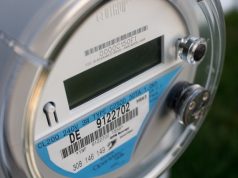(Family Features) The tide of environmental studies showing the harmful effects of litter and mismanaged waste on oceans are seemingly everywhere. For example, 8 million metric tons of plastics wind up in streams, rivers and waterways each year, according to research published in “Science.”
According to the Ocean Conservancy, plastic product consumption is predicted to double over the next 10 years. With the health of the oceans closely tied to the health of the environment, marine life and humans, making choices that help reduce ocean pollution is one way to make an impact. In fact, research from the Plastic Free July Foundation shows that more than six in 10 people refuse plastic shopping bags, avoid pre-packed fruit and vegetables, pick up litter and avoid buying water in plastic bottles.
“Mismanaged packaging waste is a threat to our oceans and the overall health of our planet,” said Lynn Bragg, president of the Glass Packaging Institute. “We can all make a difference by changing the type of food and beverage packaging we buy, opting for reusable and refillable containers, following local recycling guidelines and helping keep beaches and waterways clean.”
These tips from the Glass Packaging Institute are just a few ways to contribute:
- Think about the packaging you choose. When making a purchase, consider alternatives to plastic like glass or other natural and sustainable packaging. Glass, for example, is made mostly from sand and recycled glass, is reusable, recyclable and does not harm oceans or marine life.
- Choose reusable containers. Taking advantage of reusable containers for food and beverages is one way to live a more eco-friendly life. Since only 9 percent of plastic bottles are recycled, according to “National Geographic,” reusable containers can serve as an ideal replacement for bottled water whether at home or on-the-go. Rather than plastic, choose glass or stainless steel, which can hold hot or cold food and beverages, and help protect the contents from any chemicals.
- Reduce your single-use footprint. Whenever possible, bring reusable bags and containers to the store. Some foods like cereal, pasta and rice can be purchased from bulk bins and placed in a glass or stainless-steel storage container. To further cut down on plastic waste, consider switching to reusable straws, which are available in glass, stainless steel or bamboo.
- Recycle better. Learn what you can and can’t recycle in your community. Certain items like disposable cups, greasy pizza boxes, non-recyclable plastic containers (like those for yogurt) and take-out containers can contaminate entire batches of recycling. About 91 percent of plastic is not recycled and can linger in the environment for hundreds of years, contributing to ocean pollution. Glass containers are 100 percent recyclable; steel and aluminum cans and cardboard are also easily recyclable.
- Get involved. Volunteering or donating can help keep local beaches, parks and waterways clean. Getting involved with international and national groups with local chapters are also ways to participate in a local cleanup.
Find out more about the benefits of choosing and reusing glass packaging to help reduce ocean pollution at upgradetoglass.com.








































